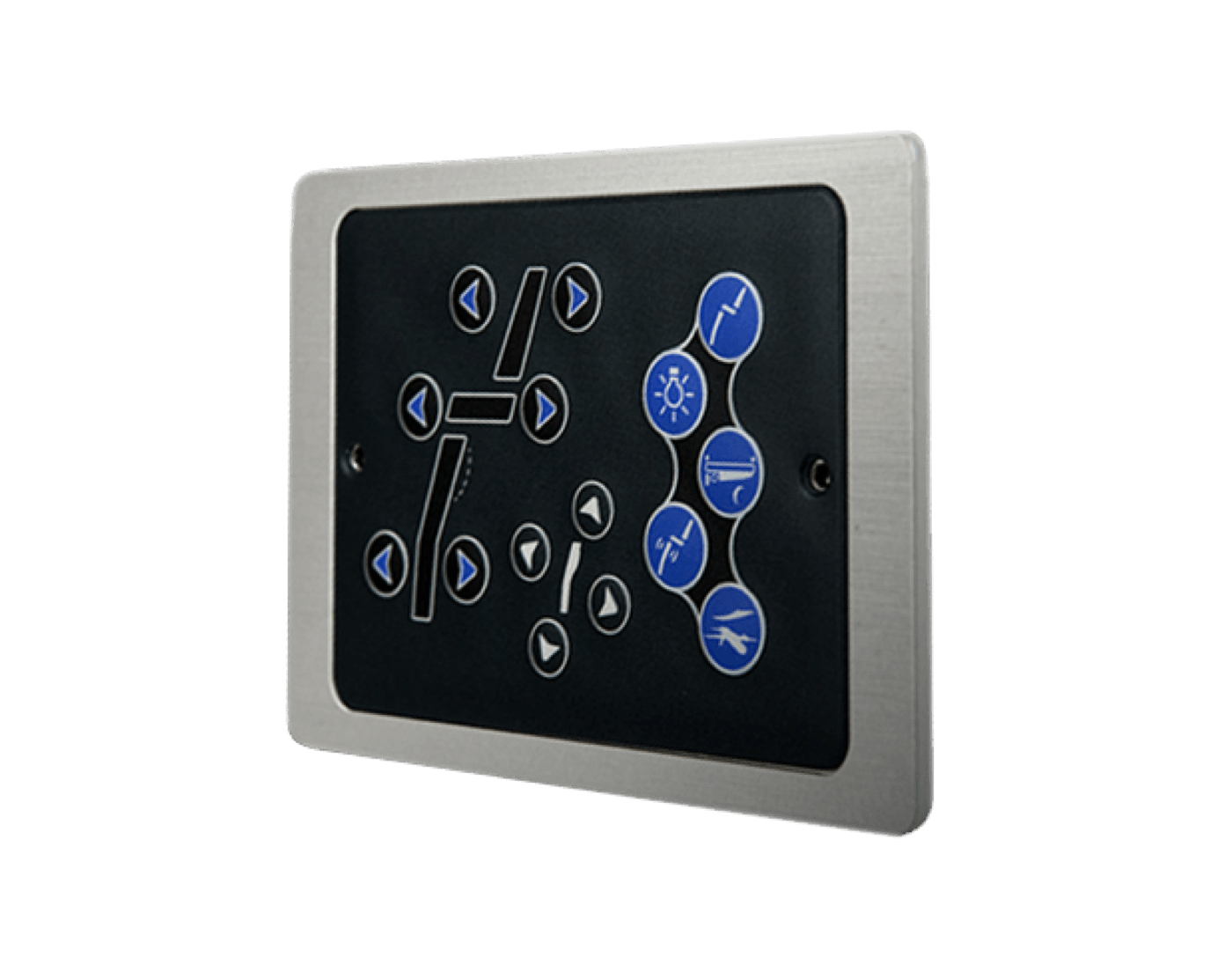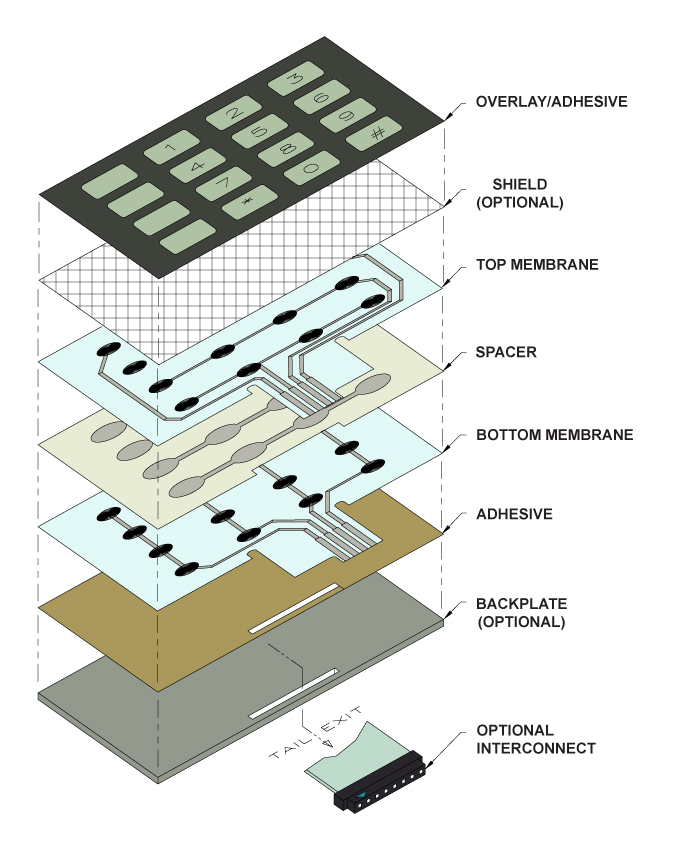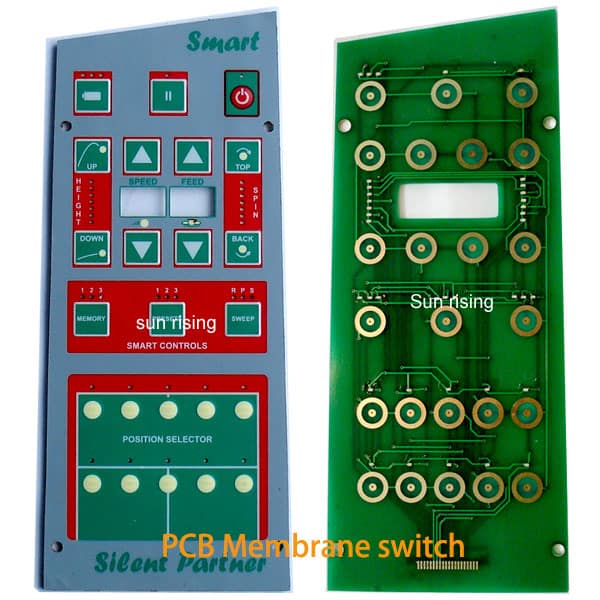How Membrane Switches Enhance User Experience in Mobile Devices
How Membrane Switches Enhance User Experience in Mobile Devices
Blog Article
Membrane Switch Over Technology: The Trick to Reputable and Affordable User Interfaces
Membrane layer switch technology has actually arised as a crucial element in the layout of user interfaces, providing both dependability and cost-effectiveness throughout a varied variety of applications. As we discover the multifaceted benefits of membrane buttons, their capacity for innovation increases concerns regarding future applications and developing trends.
Recognizing Membrane Switch Over Technology
Membrane layer button modern technology is an extensively made use of user interface service in various digital gadgets, offering a seamless blend of functionality and design. This innovation incorporates several layers of materials, generally consisting of a visuals overlay, spacer layer, and a circuit layer. The visuals overlay shows the user interface elements, while the spacer layer divides the circuit layer from the overlay till a customer triggers a button.
When pressure is used to the overlay, the circuit layer completes the electrical circuit, sending out a signal to the device. This mechanism permits different setups, consisting of responsive feedback and backlighting alternatives, boosting customer communication. Membrane layer switches are generally made using sturdy products such as polyester or polycarbonate, making sure durability and resistance to environmental aspects like wetness and dirt.
The versatility of membrane layer changes enables their application in diverse sectors, consisting of clinical gadgets, customer electronic devices, and commercial controls. Their small layout permits assimilation into space-constrained environments, giving a reliable individual interface without jeopardizing aesthetic allure. Recognizing the details of membrane button modern technology is essential for suppliers and developers seeking to produce trusted and efficient human-machine interfaces.
Trick Advantages of Membrane Buttons
While different interface options exist, membrane layer switches offer unique benefits that make them a recommended selection in many applications. Among the key advantages is their durability; membrane layer switches are developed to endure rough ecological problems, consisting of dampness, dust, and temperature variations, making sure long-lasting efficiency. This resilience substantially reduces the demand for constant substitutes, therefore decreasing overall upkeep prices.

Moreover, membrane switches are lightweight and portable, making them ideal for applications where space is limited. Their low-profile design adds to a sleek look without compromising functionality.
Cost-effectiveness is likewise a remarkable benefit, as the manufacturing procedure for membrane layer changes often tends to be more economical compared to traditional mechanical buttons. This price, combined with their dependability and ease of installment, settings membrane changes as a practical solution for a wide variety of sectors seeking reliable and reliable interface.
Applications Across Numerous Industries
Just how do membrane layer switches adapt to the diverse needs of numerous markets? Membrane layer switch innovation is significantly recognized for its adaptability, making it suitable for a large range of applications throughout multiple sectors. In the clinical field, membrane switches are utilized in diagnostic equipment and patient monitoring gadgets, where their durability and ease of cleansing are crucial for maintaining hygiene criteria. The automotive industry uses these buttons in control panels and control board, supplying a streamlined visual while making certain easy to use operation.
In consumer electronic devices, membrane switches provide a small solution for remotes and home appliances, enhancing customer experience with user-friendly layout. In addition, the commercial sector leverages membrane layer buttons for machinery control panels, profiting from their resistance to harsh environments, such as moisture and dust.
Army and aerospace applications likewise use membrane layer switches for their integrity and capacity to stand up to severe problems, ensuring operational performance in essential circumstances. Additionally, the food and drink market takes on these buttons for automated systems, where cleanliness and convenience of procedure are paramount. Eventually, membrane layer buttons are customized to satisfy the special demands of each sector, confirming their vital duty in contemporary innovation user interfaces
Design and Personalization Alternatives

In the realm of membrane button technology, design and personalization options play a critical duty Full Report in enhancing performance and individual communication. These buttons can be customized to satisfy certain functional demands and visual choices, making them functional elements in numerous applications.
One of the key personalization choices is the design of the switch itself, which can be look at here developed to fit one-of-a-kind individual interfaces and ergonomic factors to consider. By adjusting the shape, size, and arrangement of switches, manufacturers can develop user-friendly styles that facilitate convenience of use. Furthermore, the consolidation of various shades and visuals overlays enables branding and improved visibility, guaranteeing that individuals can rapidly recognize functions.
Moreover, membrane layer buttons can be crafted with numerous tactile responses mechanisms, such as increased buttons or distinct clicks, to improve the customer experience. Various materials can also be selected for longevity and ecological resistance, dealing with variables such as wetness, temperature fluctuations, and chemical direct exposure.
Eventually, the extensive layout and personalization options offered in membrane layer switch innovation empower companies to produce tailored remedies that not only fulfill useful demands however additionally line up with their branding and operational requirements.

Future Trends in Membrane Layer Buttons
As membrane layer button technology remains to progress, future fads are increasingly concentrated on improving user experience and integrating advanced capabilities. One substantial pattern is the assimilation of touch-sensitive and capacitive modern technologies into typical membrane switches. This growth permits more user-friendly user interfaces, offering tactile responses while maintaining a streamlined layout.
An additional emerging pattern is using environmentally pleasant products, driven by the expanding need for sustainable production techniques. Producers are seeking to minimize their carbon impact by utilizing recyclable substratums and low-impact inks, lining up with global sustainability objectives.
In addition, the surge of the Internet of Things (IoT) is triggering the unification of smart functions right into membrane layer buttons. Improved connectivity options will allow devices to connect with each other, allowing for seamless combination right into wider systems.
Additionally, developments in printing modern technologies, such as digital image source printing, are enabling greater layout adaptability and personalization. This enables producers to create intricate layouts and lively shades cost-effectively.

Conclusion
In conclusion, membrane layer switch innovation represents a vital advancement in customer interface style, using considerable benefits in resilience, customization, and cost-effectiveness. As improvements proceed to emerge, specifically in touch-sensitive interfaces and sustainable products, the capacity for membrane layer changes to boost individual experience and performance continues to be appealing.
Report this page